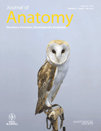
JOURNAL OF ANATOMY
metrics 2024
Leading the Way in Anatomical Excellence
Introduction
The JOURNAL OF ANATOMY, published by Wiley, is a premier international journal dedicated to advancing the field of anatomy and its related disciplines. With the ISSN 0021-8782 and E-ISSN 1469-7580, this esteemed journal has been at the forefront of anatomical research since its inception in 1945. Renowned for its rigorous peer-review process, the journal has earned a prestigious impact factor reflecting its high standard of scholarly work. This includes a 2023 Quartile ranking of Q1 in Anatomy, underscoring its prominence among top-tier publications. The journal’s diverse scope encompasses key fields such as cell biology, developmental biology, and molecular biology, making it an essential resource for researchers and practitioners alike. Publishing cutting-edge research and reviews, the JOURNAL OF ANATOMY aims to foster innovative scientific discourse and exploration within the anatomical sciences, solidifying its role as a vital hub for the global anatomical community.
Metrics 2024
 0.76
0.76 1.80
1.80 2.60
2.60 135
135Metrics History
Rank 2024
Scopus
IF (Web Of Science)
JCI (Web Of Science)
Quartile History
Similar Journals

POSTEPY BIOLOGII KOMORKI
Connecting Scholars Through Cellular InsightsPOSTĘPY BIOLOGII KOMÓRKI is a pivotal journal in the field of cell biology, published by the renowned Polskie Towarzystwo Anatomiczne. Since its inception, this journal has been dedicated to advancing scientific knowledge through the dissemination of high-quality research articles, reviews, and original studies focused on cellular structure and function. Although POSTĘPY BIOLOGII KOMÓRKI does not currently operate as an open-access journal, it remains a significant resource for researchers and professionals alike, contributing to critical discussions and findings in the biological sciences. The journal has undergone coverage discontinuation in Scopus, yet it continues to serve as an essential platform in Poland for scholarly exchange in cellular and anatomical research. Situated at the Centrum Medyczne Kształcenia Podyplomowego in Warsaw, it aims to bridge gaps in understanding and nurture academic growth among students and professionals in the biological sciences.

FOLIA MORPHOLOGICA
Pioneering Insights in Histological StudiesFOLIA MORPHOLOGICA is a prominent academic journal dedicated to advancing the fields of anatomy and histology. Published by VIA MEDICA since 1952, this journal serves as a critical platform for the dissemination of high-quality research, offering valuable insights into morphological studies. With an impact factor reflective of its dedication to rigorous scientific evaluation, FOLIA MORPHOLOGICA is recognized within the Q3 category in both anatomy and histology as of 2023, indicating its substantial contribution to these vital areas of medical science. Although currently not an open-access journal, it provides essential access options through various academic databases, ensuring that important findings are reachable by researchers, healthcare professionals, and students globally. The journal's scope encompasses a wide range of topics related to morphological sciences, making it a vital resource for those looking to stay at the forefront of anatomical and histological research. FOLIA MORPHOLOGICA remains dedicated to fostering scholarly communication and innovation, continuously aiming to enhance the scientific understanding of the intricate structures that underpin biological functions.

Anatomical Sciences Education
Fostering Collaboration for Groundbreaking DiscoveriesAnatomical Sciences Education is a premier academic journal published by WILEY, dedicated to promoting and disseminating research in the fields of anatomy, embryology, and histology. With an impressive impact factor reflecting its Q1 ranking in key categories such as Anatomy, Embryology, and Histology, this journal serves as a vital resource for researchers, professionals, and students alike. Since its inception in 2008, Anatomical Sciences Education has cultivated a robust platform for advanced scholarship, offering insights that enhance educational practices and methodologies in anatomical sciences. Based in the United States, the journal aims to foster innovation and collaboration within the scientific community, positioning itself as a cornerstone in the pursuit of knowledge in medicine at large. As the journal continues to thrive, it remains committed to open dialogue and sharing groundbreaking discoveries that shape the future of anatomical education and research.
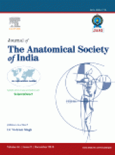
Journal of the Anatomical Society of India
Innovating research, inspiring discoveries.The Journal of the Anatomical Society of India, established in 1960, is a key publication in the field of anatomy and pathology, published by Wolters Kluwer Medknow Publications. With an ISSN of 0003-2778 and an E-ISSN of 2352-3050, this journal serves as a vital platform for disseminating innovative research and advancements in anatomical sciences. Although it currently features a Q4 ranking in both the categories of Anatomy and Pathology and Forensic Medicine as of 2023, the journal aims to elevate scientific discussions and collaborations among researchers, professionals, and students. The impact factor highlights its relevance in the scientific community, although specific metrics are currently unavailable. Located in the dynamic hub of Mumbai, India, the journal encapsulates a commitment to enriching academic discourse while addressing the latest developments and breakthroughs in the field. Researchers looking for a valued resource within anatomy and related disciplines will find this journal an essential read.
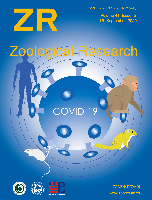
ZOOLOGICAL RESEARCH
Exploring the Depths of Biodiversity and EcologyZoological Research, published by Science Press, stands as a premier open-access journal in the fields of animal science, zoology, and ecology. Since its inception in 1980, it has fostered an inclusive platform for innovative research and dialogue within the scientific community, enabling researchers from across the globe to share their findings and insights. The journal's significant impact is underscored by its classification in the Q1 quartile across multiple categories, including Animal Science and Zoology, Ecology, and Nature Conservation for 2023, as well as its impressive rankings within Scopus, placing it in the top tier of its respective fields. Situated in Beijing, China, Zoological Research not only contributes to advancing knowledge but also emphasizes the critical importance of conservation practices in today’s rapidly changing ecosystems. With its commitment to open access, researchers, educators, and students alike benefit from immediate, unrestricted access to vital scientific information, making it an essential resource for anyone involved in the biological sciences.
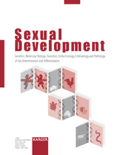
Sexual Development
Advancing Knowledge in Sexual Development BiologySexual Development is a distinguished peer-reviewed journal published by KARGER, focusing on the intricate biological processes underpinning sexual differentiation and development across various organisms. With an ISSN of 1661-5425 and an E-ISSN of 1661-5433, the journal has established itself as a vital resource for researchers in the fields of Developmental Biology, Embryology, and Endocrinology. Hailing from Basel, Switzerland, this journal is committed to disseminating high-quality research that explores the complexities of sexual development, including genetic, environmental, and hormonal influences. With considerable recognition in the academic community, it currently holds a Q2 ranking in Embryology and Q3 rankings in both Developmental Biology and Endocrinology, Diabetes and Metabolism. Researchers and professionals are encouraged to contribute to and access its wealth of knowledge, thereby advancing understanding and discovery in this critical area of biological research. The journal's continuous publication since 2006 reflects its dedication to evolving the discourse and knowledge base surrounding sexual development, making it an essential platform for scholars in the field.

INTERNATIONAL JOURNAL OF EXPERIMENTAL PATHOLOGY
Advancing Knowledge in Experimental PathologyINTERNATIONAL JOURNAL OF EXPERIMENTAL PATHOLOGY, published by Wiley, is a leading peer-reviewed journal dedicated to the field of experimental pathology. With an ISSN of 0959-9673 and E-ISSN 1365-2613, the journal has been a vital resource for researchers and professionals since its inception in 1990, covering a broad spectrum of topics within pathology, cell biology, and molecular biology. The journal's relevancy is underscored by its Q2 ranking in Pathology and Forensic Medicine and Q3 rankings in both Cell Biology and Molecular Biology, as of 2023, reflecting its significant contribution to the scientific community. Although it does not currently offer open access options, readers can benefit from its insightful research articles and reviews that guide advancements in diagnostic pathology and therapeutic strategies. As the journal continues to evolve, it remains committed to facilitating the exchange of innovative ideas and findings that drive progress in experimental pathology and related fields, making it an indispensable platform for scientists, clinicians, and students alike.
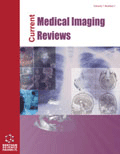
Current Medical Imaging
Exploring the Frontiers of Medical ImagingCurrent Medical Imaging is a reputable journal published by Bentham Science Publishers, specializing in the dynamic field of medical imaging, with a strong emphasis on both clinical applications and technological advancements. Established in 2007, the journal has made significant contributions to the fields of Internal Medicine and Radiology, consistently ranking in the Q3 quartile for these categories as of 2023. The journal's ISSN 1573-4056 and E-ISSN 1875-6603 ensure wide accessibility for scholarly communication, although it operates under a traditional access model. With its continuous publication from 2011 to 2024, Current Medical Imaging aims to bridge the gap between advanced imaging techniques and their practical application in patient care, making it indispensable for researchers, healthcare professionals, and students eager to stay at the forefront of innovations in imaging technology and clinical practice.
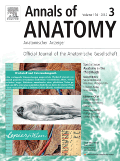
ANNALS OF ANATOMY-ANATOMISCHER ANZEIGER
Fostering Scholarly Dialogue in Anatomical SciencesANNALS OF ANATOMY - ANATOMISCHER ANZEIGER is a premier journal published by Elsevier GmbH, focusing on the intricacies of anatomical research and developmental biology. Established in 1992, this journal has continuously contributed to the advancement of knowledge in these fields, boasting an impressive impact factor that positions it within the Q2 quartile for Anatomy and a respectable ranking in Developmental Biology. With a Scopus ranking of #17 in Anatomy and #45 in Developmental Biology, ANNALS OF ANATOMY stands as a critical resource for researchers, professionals, and students alike, fostering scholarly dialogue and innovation. While currently not an open-access journal, its comprehensive scope and rigorous peer-review process ensure that the research published is of the highest quality. Based in Germany, this journal addresses a diverse range of topics and remains an essential platform for disseminating significant findings in the anatomical sciences and their interconnections with other biological fields.
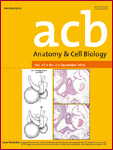
Anatomy & Cell Biology
Navigating the Complexities of Anatomy and Cell ScienceAnatomy & Cell Biology is a prominent academic journal published by MEDRANG, dedicated to advancing the fields of anatomy and cell biology through the dissemination of high-quality research. With an ISSN of 2093-3665 and an E-ISSN of 2093-3673, this journal serves as a vital resource for researchers and professionals interested in understanding the intricate processes of human and model organism anatomy and cellular functions. Based in South Korea, Anatomy & Cell Biology has gained recognition with a 2023 Category Quartile ranking of Q2 in Anatomy and continues to foster academic collaboration and innovation since its inception in 2014. With a focus on interdisciplinary studies, the journal publishes essential findings that contribute to the realms of histology, developmental biology, and neuroscience. Although the journal operates on a subscription model, it remains committed to providing valuable insights and a platform for scholarly dialogue among those in the biological sciences. Researchers and students aiming to remain at the forefront of these dynamic fields will find Anatomy & Cell Biology an indispensable part of their academic journey.